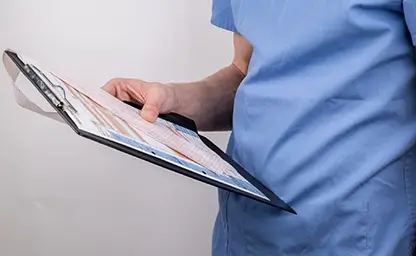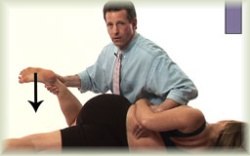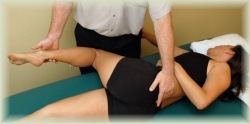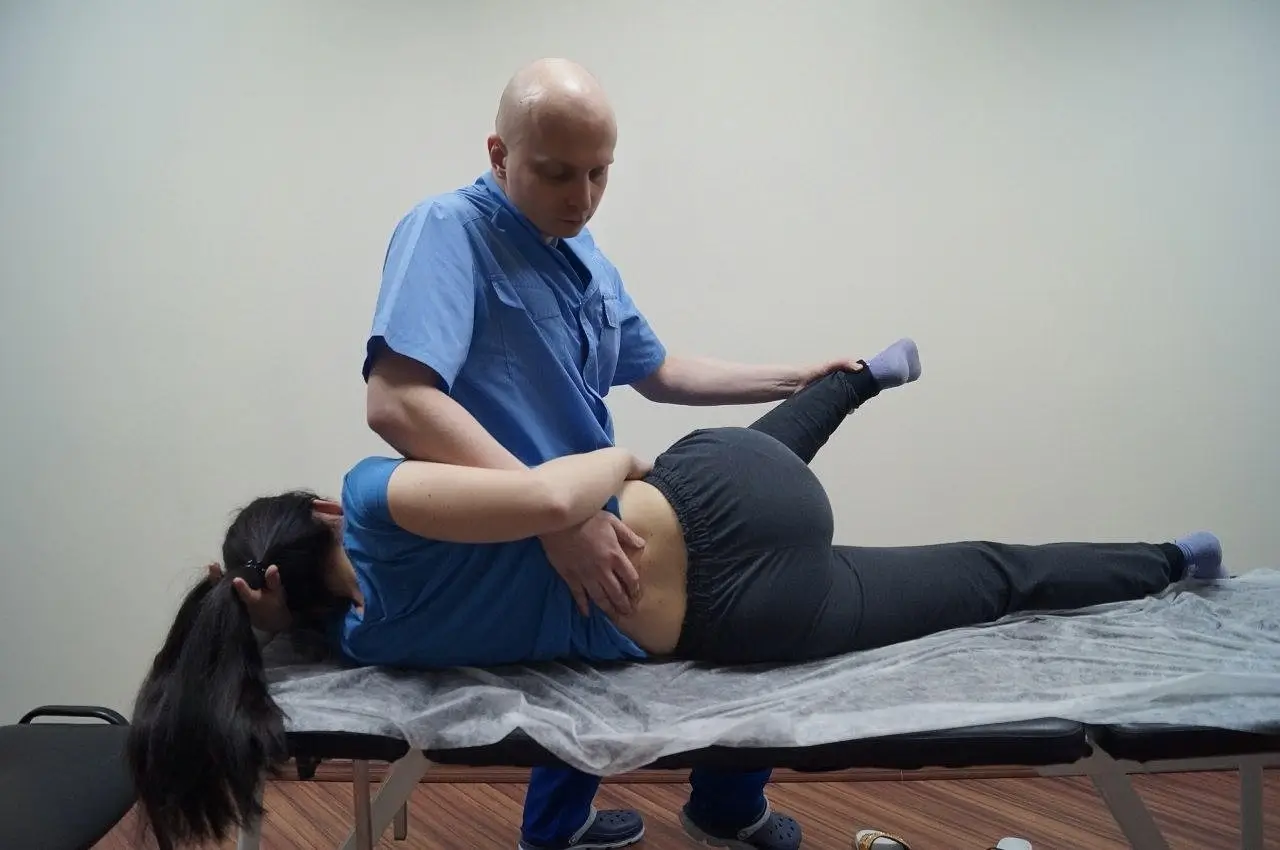

MET technique
MUSCLE ENERGY TECHNIQUE
Muscule-energy techniques. (MET) is a system of manual therapy for the treatment of movement disorders that combines the precision of passive mobilization with the effectiveness, safety and specificity of overtraining and therapeutic exercise therapy. The therapist localizes and supervises the procedures, while the patient responds with corrective effort and energy according to the therapist's instructions.
 While the two techniques have developed independently, the European technique of postisometric relaxation (PIR, Lewitt, 1985) has much in common with TEM. There are, however, some important differences between PIR and TEM, even though many of the treatment positions look very similar. The PIR technique concentrates on tightness of large muscle groups or muscle fibers and uses almost maximal contractile forces to treat this tightness. The goal of TEM is to work with limiting the range of freedom of the joint, so the forces used range from light (grams or ounces) to moderate and are precisely controlled to ensure that the effects are directed to the specific joint and restore normal joint mobility.
While the two techniques have developed independently, the European technique of postisometric relaxation (PIR, Lewitt, 1985) has much in common with TEM. There are, however, some important differences between PIR and TEM, even though many of the treatment positions look very similar. The PIR technique concentrates on tightness of large muscle groups or muscle fibers and uses almost maximal contractile forces to treat this tightness. The goal of TEM is to work with limiting the range of freedom of the joint, so the forces used range from light (grams or ounces) to moderate and are precisely controlled to ensure that the effects are directed to the specific joint and restore normal joint mobility.
And a case study:
■ SI joint pain at left side
Over the past 20 years, the understanding of muscular energy techniques has become even more refined, thanks to new anatomical information about deep vertebral muscles and proprioreception, as well as neurological mechanisms such as oculo-cervical reflexes and reflexes related to motor system respiratory functions. The basic concepts of tonic and phasic muscle physiology also developed during this period, clearly related to the clinical application of TEM.
 As in the very beginning of evolution, the diagnostic methods that have evolved in the context of TEM take into account concepts such as key injury, mechanisms of body adaptation to injury, so that specific joints responsible for body stress (and the symptoms arising from that stress) can be isolated and effectively treated. The diagnostic system for TEM has contributed greatly to the clinical effectiveness of other direct techniques, as the lesions treated with these techniques have become more accurately identified. Some of the benefits of TEM are listed below.
As in the very beginning of evolution, the diagnostic methods that have evolved in the context of TEM take into account concepts such as key injury, mechanisms of body adaptation to injury, so that specific joints responsible for body stress (and the symptoms arising from that stress) can be isolated and effectively treated. The diagnostic system for TEM has contributed greatly to the clinical effectiveness of other direct techniques, as the lesions treated with these techniques have become more accurately identified. Some of the benefits of TEM are listed below.
Benefits of muscle-energy techniques:
- Safety. The techniques involve the active participation of the patient, allowing the patient to remain in control and participate in their own treatment. This control, in turn, almost eliminates the possibility of tissue damage.
- Improvement of joint mobility. METs aim to improve joint mobility by using the patient's muscle contractions in specific directions. The method helps restore the normal range of motion in the joint and eliminate limitations or dysfunction.
- Treatment is based on diagnosis. The impact is made on the dysfunctional muscles and joints identified during the diagnosis of restricted movement or muscle imbalance, resulting in a precise and targeted treatment.
- Analgesia. Often allow for a fairly rapid reduction of pain caused by limited joint mobility or postural imbalance. If the key lesion is cured, it is also eliminated completely.
- Active participation of the patient. Muscle energy techniques empower patients by actively involving them in their own treatment. Patients can be trained to apply them independently at home. Such participation can lead to improved long-term treatment results.
Muscle energy techniques are not at all traumatic plus, these techniques are effective in detecting and correcting "key" lesions. Because of its conceptual capabilities, TEM can quite logically be considered the first step for students beginning to learn manual therapy, as it provides the structure for a better understanding of other manual therapy modalities. For example, in those who have mastered the musculo-energetic techniques, the push technique becomes softer and more precise.
 Diagnosis in the method has unique characteristics, and its effectiveness, as well as the efficacy of the treatment, is based on the interplay of many interdependent factors. Effective application of the theoretical framework also requires a link between theory and practice. This, in turn, is proportional to the degree of understanding and competence in the concepts and techniques of external examination and examination. In addition, by comparing and contrasting other, alternative approaches to clinical problem solving, decision making, and therapy, the practitioner can broaden the completeness of his perception of concepts and principles.
Diagnosis in the method has unique characteristics, and its effectiveness, as well as the efficacy of the treatment, is based on the interplay of many interdependent factors. Effective application of the theoretical framework also requires a link between theory and practice. This, in turn, is proportional to the degree of understanding and competence in the concepts and techniques of external examination and examination. In addition, by comparing and contrasting other, alternative approaches to clinical problem solving, decision making, and therapy, the practitioner can broaden the completeness of his perception of concepts and principles.
☛ The positional release technique.
☛ Mulligan technique of manual therapy.




